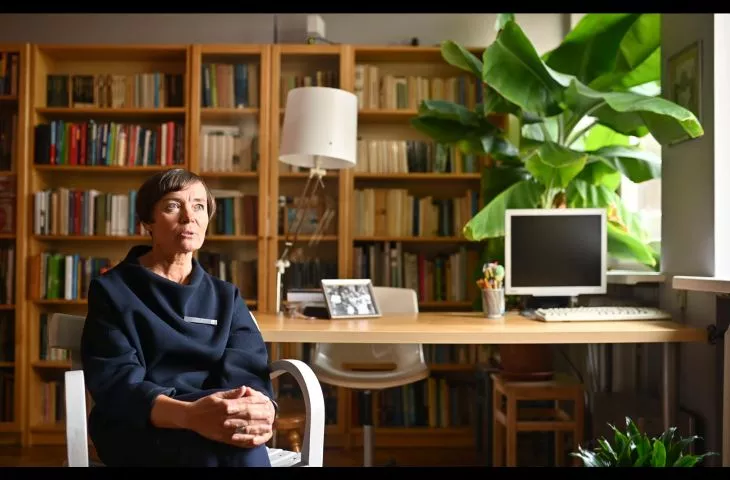Bathed in greenery, the simple mass of a residential row building in Poznań's Grunwald district is the idea of a trio of architects Witold Eysmontt, Roman Pękalski and Eustachy Chmielewski. They conceived and then designed a modernist terraced house consisting of simple and relatively small flat-roofed houses on Promienista Street. One of them is currently inhabited by Eysmontt's granddaughter, Anna Hryniewiecka, an art historian and director of the Zamek Cultural Center in Poznan.
Construction of the terraced house lasted only a year and already in 1938 residents moved in. However, not for long. What history it had, who lived in it, what stories it hides you will see in the next episode of Domokrążcy.
"Thesparse form, the characteristic rhythm of the facade, the interior subordinated to the function are the uniqueness of this realization. The complex of buildings on Promienista Street not only transforms or quotes stylistic solutions fashionable at the time, but strongly responds to the postulates of the modernist avant-garde.Italso avoids stylistically alien ornaments, with which conservative Poznań residents "warmed up" austere blocks of villas and tenement houses of the 1930s. The terraced houses designed by Eustachy Chmielewski are closer to the Warsaw avant-garde (similarity to the houses of Żoliborz "journalist") than to the Poznań realizations of that period". - reads the curatorial description of the New Plan Festival.
Witold EYSMONTT - architect, graduate of the Faculty of Architecture at the Warsaw University of Technology. From 1926-29 he was an architect at the District Directorate of State Forests in Poznan. Co-author (with Karol Schayer) of, among others, the reconstruction of the city hall in Królewska Huta. Member of SARP. He was a participant in the 1939 September Campaign. Executed in April-May 1940 in Katyn.
Roman PĘKALSKI - graduated in architecture from the Warsaw University of Technology. From 1929 to 1930 he was deputy manager at the District Building Department in Lodz, then in 1931-33 he worked at the Lodz Planning Office. In 1933 he moved to Poznań and headed the Regional Planning Office there until the outbreak of war in 1939. After the war, from 1945 to 1949, he worked at the Regional Directorate of Spatial Planning, and then at the Central Bureau of Architecture and Building Planning in Poznań (1049-52). In 1945-1950 he was president of the Poznań branch of SARP. Among other things, he was the author of: detailed plans of cities and settlements in Gniezno, Klodawa, Chodzież and Wapno.
Eustachy CHMIELEWSKI - a graduate of the Faculty of Architecture at Lviv Polytechnic, where he earned his degree in architecture in 1924. Before the war he was director of the Department of Construction at the Ministry of Internal Affairs. In 1941-48 he lived in Lipnica Dolna in Podkarpacie on his wife's estate, and then in Warsaw's Zoliborz. He worked in Jaslo, Rzeszow, Katowice in the architectural office of the Silesian Provincial Office as a construction advisor, Poznan and Warsaw. From 1948 he was an employee at the Ministry of Reconstruction, renamed after 1949 to the Ministry of Construction. Member of SARP. He is the author of, among others, the building of the First High School in Bielsko-Biała, the House of Professors of Silesian Technical Scientific Institutes in Katowice, and the Church of the Name of Mary in Bączal Dolny.
The film was made as part of the New Plan Festival, which took place in Poznań from 8-14.10.2020. The theme of this year's edition is "Home."
A&B is a media patron of the event.
Organizers: Association of Polish Architects Poznań Branch, Open Center
Partners: the National Cultural Center, the City of Poznań, the Center for Local Initiatives, the Castle Cultural Center, the Wielkopolska Regional Chamber of Architects, SARP Wrocław, SARP Warsaw


















